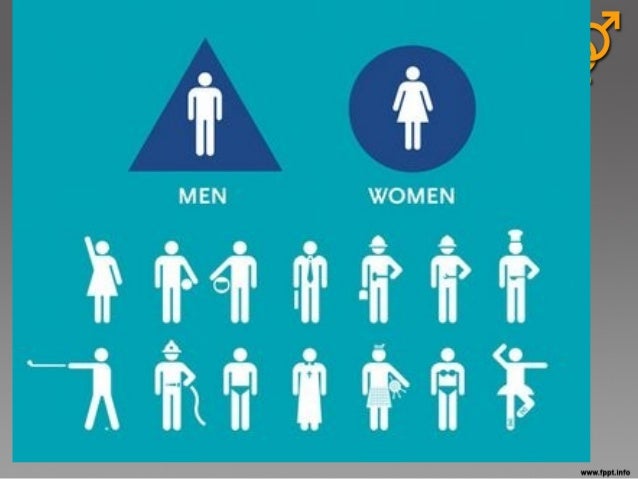The Male
Gaze and Patriarchy
Many
women enjoyed when men observes them and look at their bodies. Some might like
it while others despise it.The male gaze is defined in the
way men view women and how women like to be looked at. In John Berger’s
article:"Ways of Seeing”, he illustrates the relationship between a women and
men, him as the surveyer, and her as being the surveyed. In this case men exert
their power and authority through their gaze, and women simply becomes and
object. Additionally, in Bell Hooks article, “Understanding Patriarchy” shows
how the system of Patriarchy emphasizes on the idea that men are more superior
to women, and thus posse’s authority and dominance over them. Women are still
depicted as inferior and weak whose role is beneath that of men.
Berger
depicts that a women’s life is pretty much limited to the things that she can
accomplish. A woman has no freedom to be herself nor to choose what she wants
to become. According to Berger: “To be born a woman has been to be born, within
an allotted and confined space, into the keeping of men” (Berger 46). The
author demonstrates that women have no choice or voice. In the eyes of men
women are just seen as mere objects. These issues still continue to exist for
whether in ads or campaigns the models picture’s is still use to appeal to men.
The idea Berger illustrates about the surveyer and surveyed continue to exist
in today’s society. According to Berger: “Men look at women. Women watch
themselves being looked at… Thus she turns into an object” (Berger 47). In this
case the surveyer is the male figure and he institutes power over a women. The
surveyer objectifies the surveyed. The surveyed, the woman becomes the object.
The role of men and women is different from one another. For instance, a nude
painting of a woman will never be regarded as equal to that of a man. Through the
male gaze men still show authority, power, and masculinity even when they are naked,
whereas women are objectified, and seen as sexual objects. While thinking more
in depth about the advertisements that are shown in the media such the
Victoria’s Secret underwear, this is not only targeting the women’s audience,
but also that of men. This is shown in the link https://finallyfeminism101.wordpress.com/2007/08/26/faq-what-is-the-%E2%80%9Cmale-gaze%E2%80%9D/ by Tekanji in which shows that the image of the underwear is sold to both men and women just like that of the male gaze.Similarly, Miley Cyrus video “Wrecking Ball” is a great
example that illustrates the male gaze. This is depicted in the link https://platinumrecordsco.wordpress.com/2013/09/17/the-male-gaze-by-mulvey/
Figure 1. shows Victoria's Secret model Candice Swanepool picture for the VS magazine. This is advertising the underwear and targeting the male audience. Women buy the product most of the time so that the man can see her.
Bell
Hooks shows that the patriarchal system only serves to depict the inequality
between men and women. According to Hooks: “Patriarchy is a political-social
system that insists that males are inherently dominating, superior to
everything and everyone deemed weak, especially females… (Hooks 18). This
system emphasizes that men are powerful and the dominant figure in the
household. Women are viewed as fragile, weak, and passive. Hooks also speaks
about the idea of gender roles and that even as kids boys and girls are
assigned a specific gender role. This is illustrated in Figure 2. Boys are strong, masculine, provider of the
home whereas as a girl she has to nurture, act accordingly and without
violence, play girl games and not boys games (18-19). Even today most of us are
taught some of these things in which a girl is defined in pink and a boy in
blue color. We are assigned gender roles. Our society places labels on us and we
adapt to this and we don’t question if this is right or wrong. As
Hooks mentions that men don’t want to challenge patriarchy because they are
afraid of loosing the benefits they gain from it; control and authority (29). This
is something that I found myself learning about in this article. I never
realized that patriarchy affects both men and women. However, men don’t do
anything about this because they always like to feel superior and have control
over women.

Figure 2 shows the gender roles that society places on people. Women wear skirts, dresses, and men can play the hard sports, and do the jobs that women would never be able to.
Berger
and Hooks articles “Ways of Seeing”, and “Understanding Patriarchy” have made
me more conscious about issues that are prevalent in our society. Although time
has passed, the role that men and women had in the past continues to exist
today. The media plays a huge role in depicting and influencing how women and
men are viewed. Women are fragile, weak and submissive. Men are muscular and
authoritative. Sometimes as women we attack one another instead of showing
solidarity to each other. We applaud everything that men do and regard them as
great without questioning the inequality that exists amongst us. Gender roles
are assigned since birth and children are educated into a patriarchal system
because this is what we are used to and what we regard as being “correct”. We
know that something is wrong with this system yet we fail to speak up. From
know on I will question everything that is shown in the media. I will challenge
the patriarchal structure by being strong and doing the things that I am told
that I can’t.
Berger, John. Ways of Seeing.1972. London:British Broadcasting Corporation and Penguin, 1977.
Hooks, Bell. Understanding Patriarchy. The Will to Change, Men, Masculinity, and Love. New
York: Atria, 2004. Print.

No comments:
Post a Comment